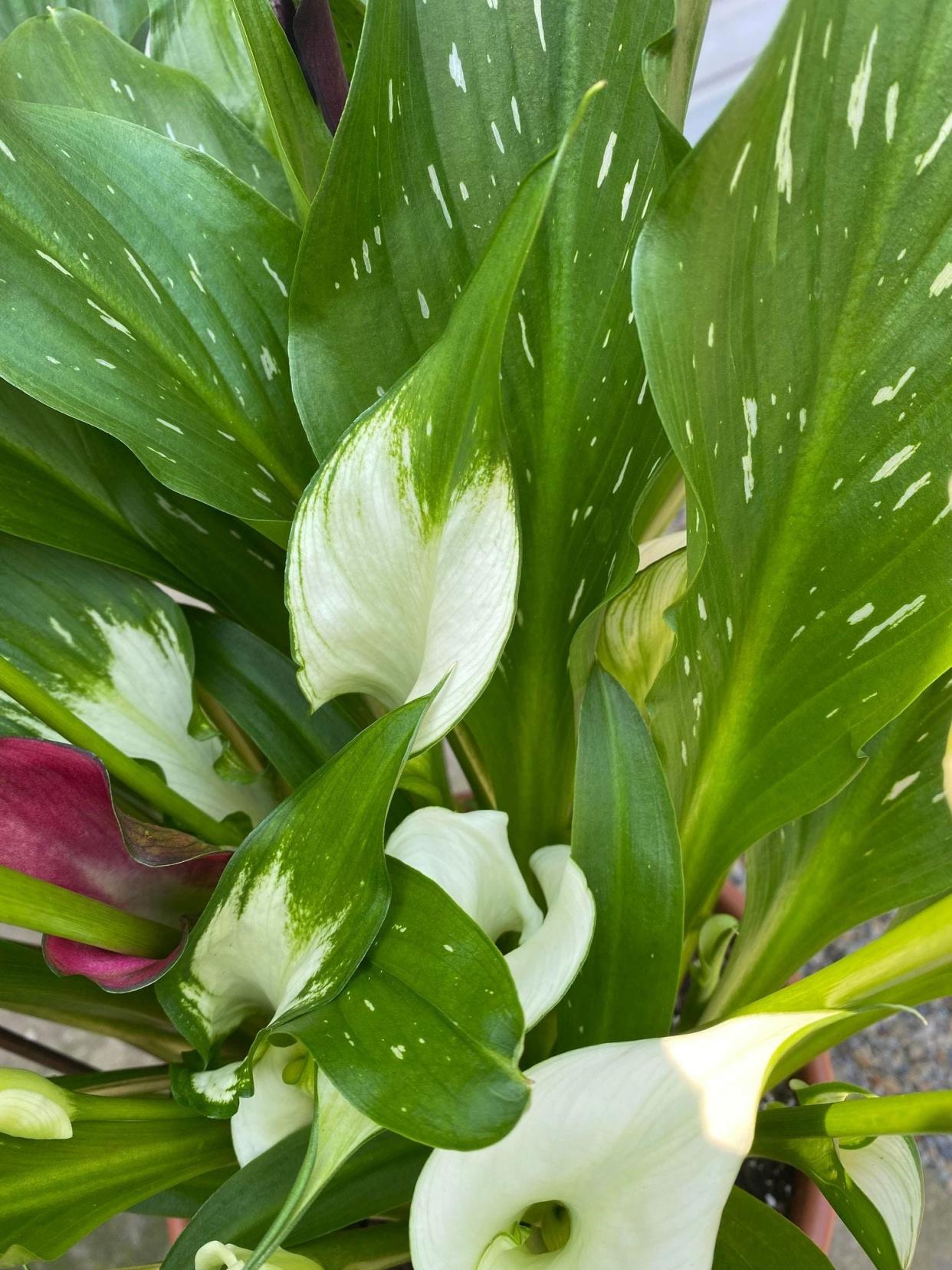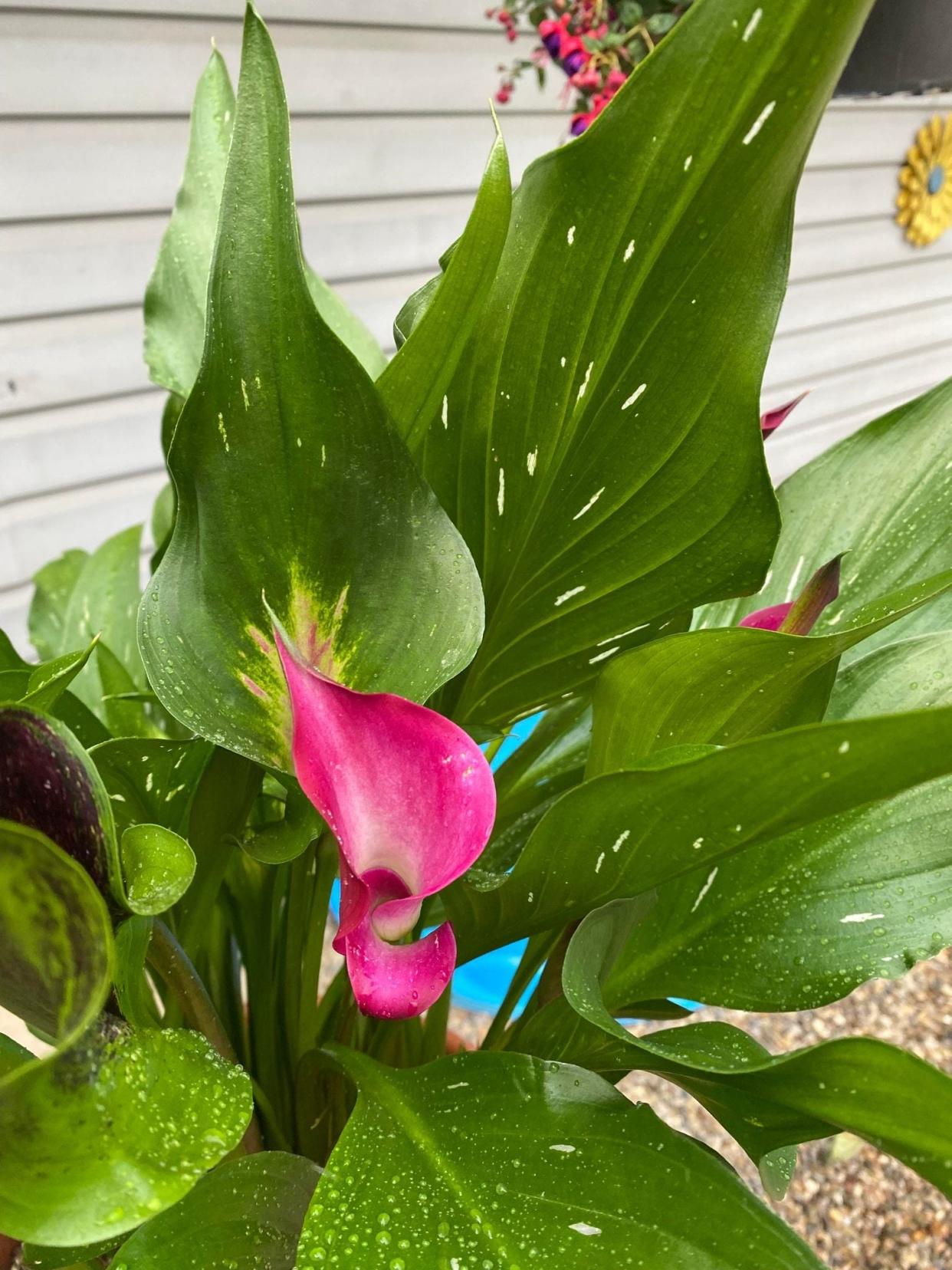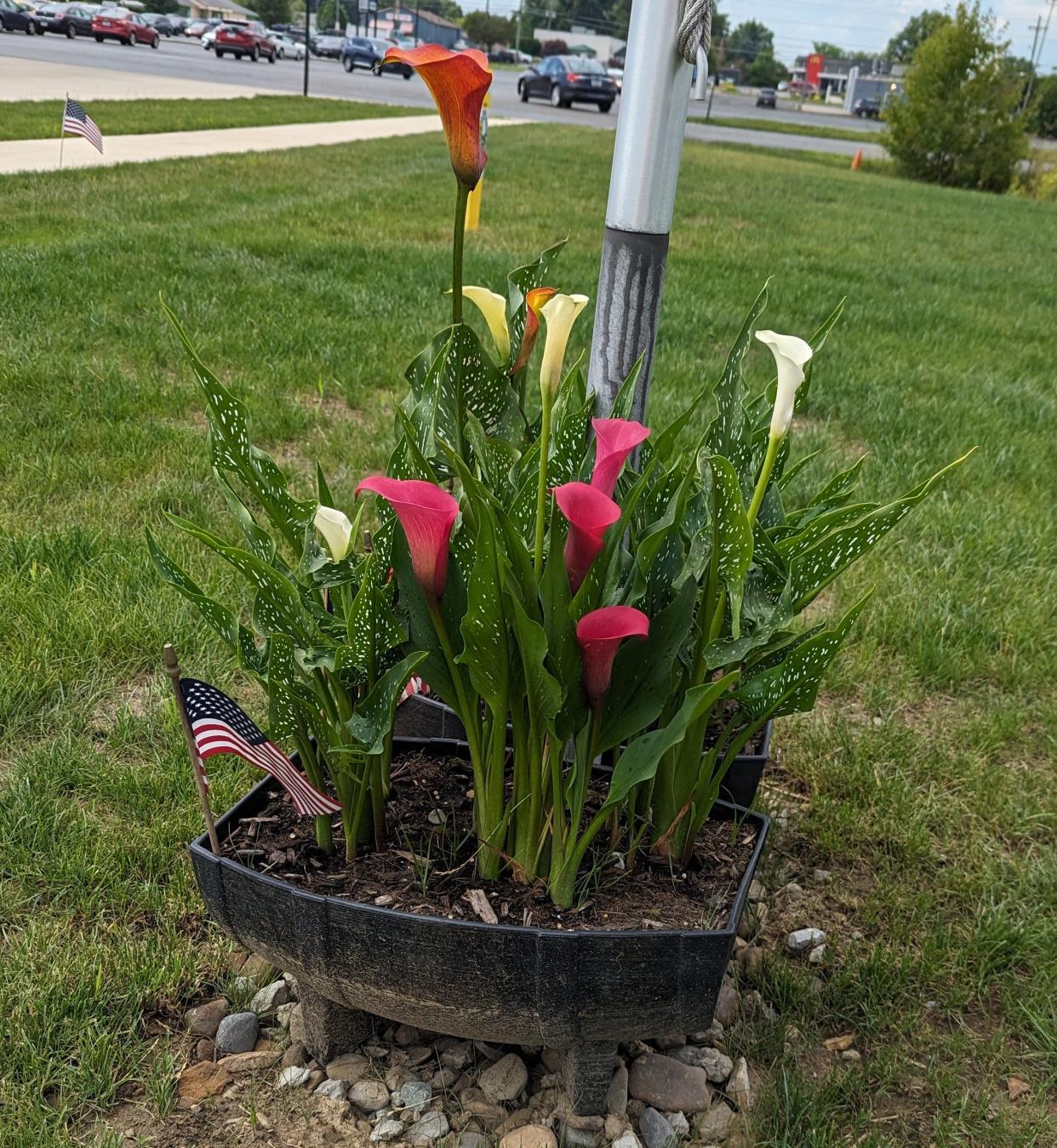A Stroll Through the Garden: A perennial that's a symbol of rebirth and resurrection
When I was walking at the pool last week, I got a question from a pastor’s wife who asked what kind of hints I might be able to give her about caring for her calla lilies. I have had several friends in the past ask me about caring for calla lilies, and I shall address the question today.
When my family and I were in the plant rental business, we had many flowers we would take out on the different contracts. We had restaurants with clientele who would come in just to look at the flowers. One of our company’s challenges was to know what kind of a flower they were looking at on the table. Flowers, I believe, are still something people enjoy. Seems we normally had a calla lily in one of the rentals this time of year.
A plant with a special meaning
The way the calla lily got its name comes from a Greek legend between Zeus and Hera. Zeus had a son, named Hercules, with a woman outside his relationship with Hera. While Hera slept, he placed Hercules on Hera. Hercules was hungry and this woke Hera up and she pushed him away. Milk was still flowing and created the Milky Way, and some fell to the earth. From these drops came these beautiful white lilies. The Greek word kalos also means beauty in English from which the name calla lily is derived.
These white lilies have a popular interpretation of assigning a purity, faithfulness and holiness. You can see many depictions of Mary carrying these flowers. For millions of Christians, they are a symbol of rebirth and resurrection. This ties us into the resurrection of Jesus Christ. This also is why you will see these flowers around this time of year and why we would bring white calla lilies into our rentals. These bulbs can be forced to come anytime of the year.

Planting calla lilies outside
The plants are not members of the lily family, and are native to southern Africa, which place them in zones 8 to 10. There also are far more colors than just white. If you grow a calla lily, which can continue to grow for many years, you will need to remove the plant from an outdoor garden or keep them in pots from year to year. Calla lilies planted or brought outside in a pot can bloom from six-12 weeks through the summer.
Calla lilies can be planted in gardens where the soil temperatures have reached 65 degrees well after the danger of frost has passed. This summer-blooming flower is a rhizome, like irises, that is planted either in the ground or in pots. When in a pot, you need to get one large enough to prevent a problem with being root bound. Because this is a tropical plant, callas will go into a dormancy when cooler temperatures come back in the fall. When you remove the rhizome, you need to harden them off.

There are a number of steps to planting the flower in the ground outside. Once you have sited the calla hole and believe the plant will endure being located in the location, dig the hole to about the depth of a hand trowel. Work in some compost that would be appropriate for the soil and the plant.
Calla lilies do not like wet roots so you should have good drainage for the plant to do well, which includes container-grown callas. Drainage should be free flowing. Plant the rhizome face up or the growing side face up about 2-3 inches deep and cover, firming the soil gently.

Water the rhizome well. Until you see the leaves coming through the soil, water sparingly, whether in pots or in the garden. Once the leaves have sprouted increase your watering to moisten the soil. Root rot will appear on your plant if you water too frequently.
What I like is you can expect the plant to appear in about two weeks after planting. It will bloom two to three months later, depending on temperature and sunlight. Moist soil is what calla lily grows in best − not soggy, so drainage is important.
Our calla lilies do the best in full sunshine. Pots will allow you to move the over-stressed calla lily to the shade to keep them from getting burned. Mulch on the top of the soil for these plants will help keep the soil evenly moist, reduce the need for watering, and keep the weeds down.

Hope you have a great stroll through your garden. I've been seeing many different flowers in bloom. If you have any challenges on your stroll, let me know what you see and I’ll do what I can to help at ericlarson546@yahoo.com. I shall put my column in the form of a blog soon and you can see it at ohiohealthyfoodcooperative.org. Thank you for participating in our column.
Eric Larson of Jeromesville is a veteran landscaper and gardening enthusiast and a founding board member of the Ohio Chapter of Association of Professional Landscape Designers.
This article originally appeared on Mansfield News Journal: Calla lilies thrive inside and out with proper light and soil
